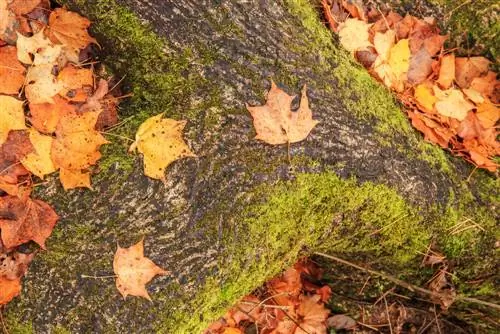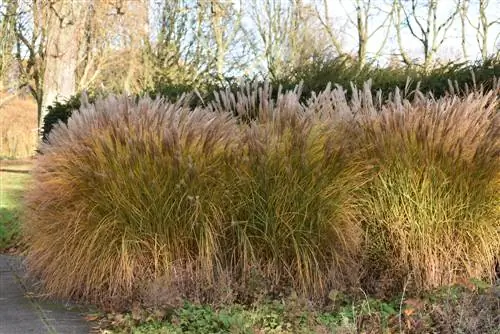- Author admin [email protected].
- Public 2023-12-25 17:45.
- Last modified 2025-01-23 11:22.
The Japanese maple, as the name suggests, originally comes from Asia. The hardy deciduous tree is now becoming increasingly popular in this country. We provide interesting facts about the roots of the Japanese maple.

What are the roots of a Japanese maple like?
The Japanese maple is a shallow-rooted and heart-rooted tree. It does not have deep roots, but rather spreads its root system close to the surface and wide. With young trees, support in the soil is often limited, so plant stakes can help.
How deep does a Japanese maple root?
The Japanese mapledoes not have deep roots, but the root system is always relatively close to the surface and grows in width rather than in depth. Only when planted specimens are ten years or older do the roots become really strong. Because the Japanese maple does not have deep roots, young trees in particular do not find sufficient support, especially in poor soil conditions. They then cannot grow properly due to the risk of wobbling in strong winds - planting stakes can help.
Is a Japanese maple a shallow rooter?
The Japanese maple is aShallow-rooted tree Shallow-rooted trees have the property that the plants evaporate a lot of water. In summer, trees freshly planted in the garden or a young Japanese maple in a pot need enough water. Waterlogging must be avoided at all costs in order not to damage the roots and, as a result, the entire tree. Older Japanese maples have better water management and cope better with dry periods.
Is Japanese maple a heartroot tree?
Like other maples, the Japanese maple, of which the Japanese maple with the Latin name Acer palmatum is the most popular species in our gardens,is one of the heartroot plants This beautiful name explains itself purely figuratively: If you cut the roots crosswise, the root network is reminiscent of a heart that has spread out to the sides in the shape of a plate.
When do the roots need to be cut back?
If the tree or potted plant is affected byVerticillium wilt, often simply referred to as wilt disease and characterized, among other things, by brown leaves, there is no way around it. rigorously cut back the roots. The Japanese maple must then be repotted or replanted in fresh soil at a new location in the garden.
What can you do to limit root growth?
If you don't want the roots of the Japanese maple to grow wider and wander through the garden, you can remedy this with aroot barrier and create an artificial boundary. The following steps are necessary:
- digging up the maple
- Dig the planting pit 50 cm deep
- place a special geotextile (€36.00 on Amazon) in the planting pit through which the roots cannot penetrate (the fabric must protrude a few cm above the edge of the ground so that the roots do not spread above)
- replant the maple
Tip
Always disinfect garden tools
If roots affected by a fungal infection are cut back, garden tools must be thoroughly disinfected after contact with the cut root system - otherwise the disease can be transmitted to other plants in the garden. In addition, for the same reason, care should be taken not to compost the cuttings, but rather to dispose of them with household waste.






